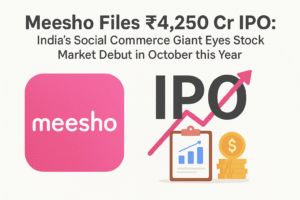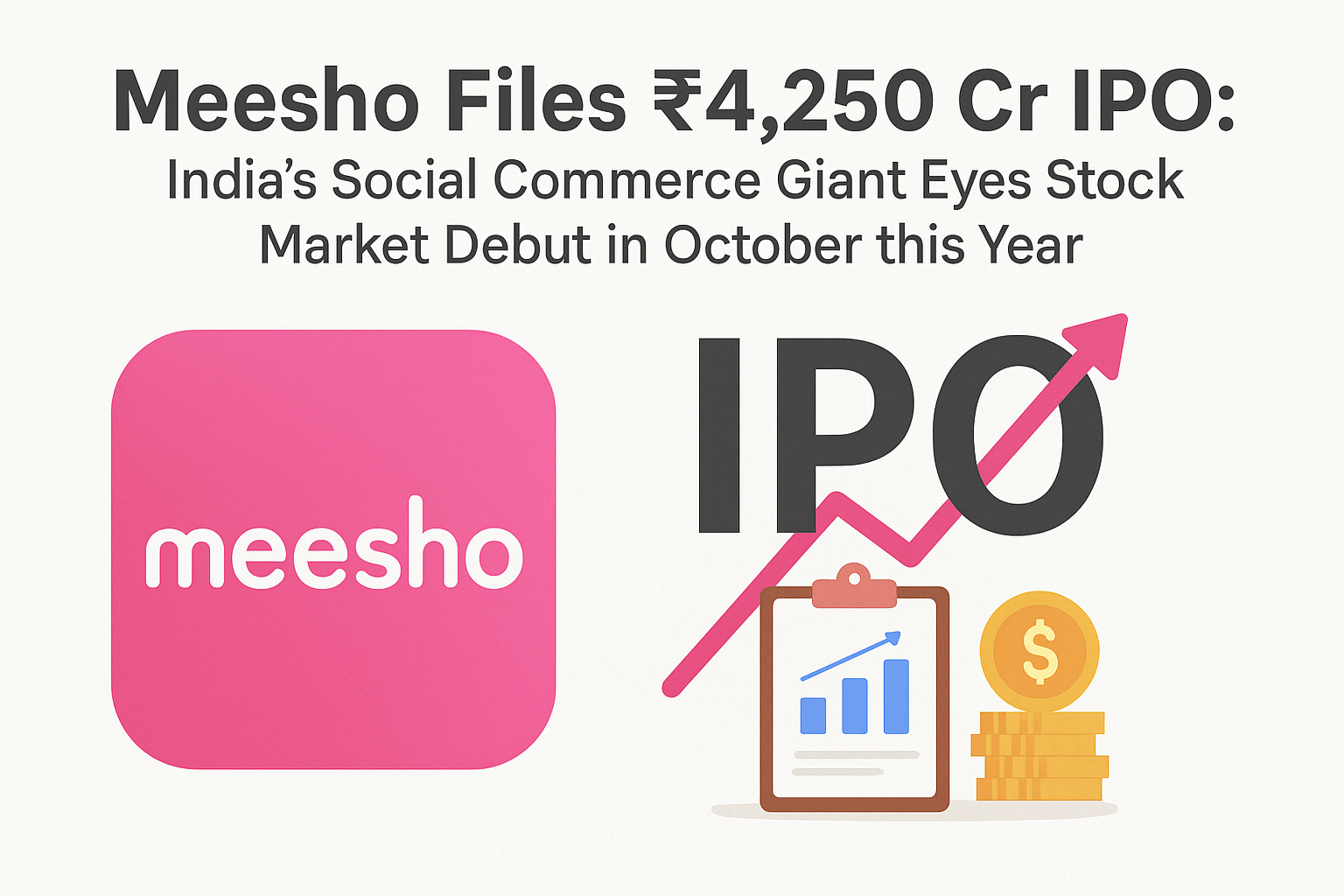
Introduction
You’ve probably heard of big IPOs like LIC, Zomato, or Paytm — but did you know India has another fast-growing segment for small and medium businesses?
It’s called SME IPO, which stands for Small and Medium Enterprises Initial Public Offering.
SME IPOs are special IPOs designed to help small businesses raise funds and get listed on the stock exchange. They work a bit differently than mainboard IPOs.
This detailed guide explains what an SME IPO is, how it works, who can invest, how to apply, risks and benefits, and what you should check before investing.
What is an SME IPO?
SME means Small and Medium Enterprise. These companies are usually smaller than big corporations but play a huge role in India’s economy.
An SME IPO allows such companies to raise money from the public to grow their business, expand operations, pay off debt, or invest in new projects.
In India, SME IPOs are listed on dedicated SME platforms like:
✅ BSE SME
✅ NSE EMERGE
These platforms follow rules set by SEBI to protect investors but make it easier for smaller companies to enter the stock market.
How SME IPOs are Different from Mainboard IPOs
While the basic idea is the same — companies sell shares to the public — SME IPOs have a few unique features:
Feature | Mainboard IPO | SME IPO |
Minimum Post-Issue Capital | ₹10 Cr+ | ₹1 Cr–₹25 Cr |
Lot Size | Flexible | Larger Lot Size |
Application Size | Lower | Minimum ₹1–2 lakh |
Exchanges | NSE, BSE | BSE SME, NSE EMERGE |
Disclosure Requirements | High | Simplified |
Listing Norms | Strict | Relaxed |
Who Can Invest in SME IPOs?
Anyone with a Demat and Trading Account can invest. However, the bigger lot size means the minimum investment is higher — often ₹1–2 lakh or more per application.
This is why SME IPOs mostly attract:
✅ HNIs (High Networth Individuals)
✅ Retail Investors with bigger ticket sizes
✅ Long-term investors who trust the business story
Why Do Companies Choose SME IPOs?
Small and medium businesses may not meet the criteria for a mainboard IPO. The SME platform helps them:
- Raise capital for growth.
- Gain market credibility.
- Increase transparency.
- Get wider visibility with customers and suppliers.
It’s also a stepping stone — successful SMEs often migrate to the mainboard later.
How to Apply for an SME IPO
The process is similar to regular IPOs but with a few points to note.
✅ Open Demat and Trading Account — This is mandatory for all IPOs.
✅ Check Eligibility — Minimum lot size is higher, so ensure you have sufficient funds.
✅ Apply via ASBA or UPI — Many SME IPOs are ASBA only, so check your broker platform.
✅ Read DRHP (Draft Red Herring Prospectus) — Always study the company’s financials, risks, and how it plans to use the funds.
✅ Watch Subscription Figures — This shows investor demand.
Sample Table: Example SME IPOs
Company | IPO Price (₹) | Lot Size | Minimum Investment (₹) | Listed On |
ABC Industries | 50 | 2000 shares | ₹1,00,000 | BSE SME |
XYZ Traders | 75 | 1600 shares | ₹1,20,000 | NSE EMERGE |
PQR Foods | 120 | 1000 shares | ₹1,20,000 | BSE SME |
Benefits of SME IPOs
✅ Higher Growth Potential — Small businesses can grow rapidly, giving higher returns if they succeed.
✅ Diversification — SME IPOs are an alternative to large-cap stocks.
✅ Listing Benefits — Investors can buy and sell shares after listing.
✅ Transparent Governance — Listed SMEs follow SEBI rules, increasing trust.
Risks to Consider
SMEs are smaller firms, so risks are naturally higher:
❌ Lower liquidity — Fewer buyers/sellers can make it harder to sell shares.
❌ Business risks — Small businesses may face more market volatility.
❌ High minimum investment — Not suitable for everyone.
Important Things to Check
Before you apply:
✅ Company financials: Revenue growth, profit, debt.
✅ Promoter background: Experience, credibility.
✅ Business model: Is it scalable?
✅ Peer comparison: Is it fairly valued?
✅ Use of funds: Will the money help growth?
SME IPO Listing: How It Works
Once shares are allotted, they are listed on the SME exchange. Here’s the typical flow:
Step | Timeline |
IPO Closes | Day 0 |
Basis of Allotment Finalised | Day 3–4 |
Refunds Processed | Day 4–5 |
Shares Credited to Demat | Day 5–6 |
Listing Date | Day 7–10 |
SME IPO Migration to Mainboard
Did you know a successful SME can move to the mainboard after a few years?
✅ Minimum conditions apply, like profitability, capital, and compliance history.
✅ Migration means higher visibility, better liquidity, and more investors.
Checklist for SME IPO Investors
✅ Be prepared for high lot size & higher risk.
✅ Study the business carefully.
✅ Diversify — don’t put all money in one IPO.
✅ Stay updated on subscription and GMP trends.
✅ Hold shares patiently if you trust the company’s growth.
Table: Pros & Cons of SME IPO
Pros | Cons |
Good growth potential | Less liquidity |
Early-stage investing | Higher minimum investment |
Credibility for companies | Higher business risk |
Possible migration to mainboard | May take longer for returns |
Conclusion
An SME IPO is a great way for small businesses to grow and for investors to find hidden gems early. But the bigger lot size and higher risks mean you must do extra research.
If you understand the business, trust the promoters, and can hold for the long term, SME IPOs can be a smart addition to your investment strategy.
✅ FAQs (10)
Q1: What is an SME IPO?
👉 It’s an Initial Public Offering for Small and Medium Enterprises to raise funds and get listed.
Q2: Where are SME IPOs listed?
👉 On BSE SME or NSE EMERGE platforms.
Q3: Who can apply for SME IPOs?
👉 Any investor with a Demat & Trading Account and sufficient funds for minimum lot size.
Q4: What is the minimum lot size?
👉 It varies but is often ₹1 lakh or more.
Q5: How do I apply for SME IPO?
👉 Through ASBA or your broker app with correct Demat details.
Q6: Are SME IPOs riskier?
👉 Yes, small businesses may face more challenges.
Q7: Can SME IPO companies move to the mainboard?
👉 Yes, if they meet SEBI’s migration conditions.
Q8: Is liquidity an issue in SME IPOs?
👉 Sometimes — fewer buyers and sellers means selling may take time.
Q9: Should new investors apply for SME IPOs?
👉 Only if they understand the risks and have surplus funds.
Q10: Where can I find SME IPO details?
👉 SEBI’s website, stock exchange platforms, or your broker’s IPO calendar.
By Popular Top Share Brokers

Motilal Oswal
30 days brokerage free trading
Free – Personal Trading Advisor

Zerodha
Free Eq Delivery & MF
Flat ₹20 Per Trade in F&O

AngelOne
Free Equity Delivery
Flat ₹20 Per Trade in F&O

Profit mart
Free Equity Delivery
Flat ₹20 Per Trade in F&O

ProStocks
Unlimited @ ₹899/month
Rs 0 Demat AMC

Upstox
FREE Account Opening
Flat ₹20 Per Trade

Paytm Money

Pay ₹0 brokerage for first 10 days
Flat ₹20 Per Trade

Fyers
Free Eq Delivery Trades
Flat ₹20 Per Trade in F&O











